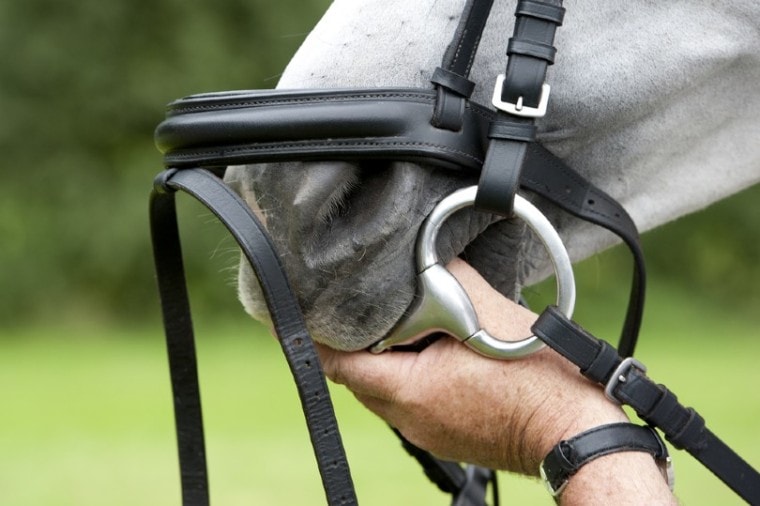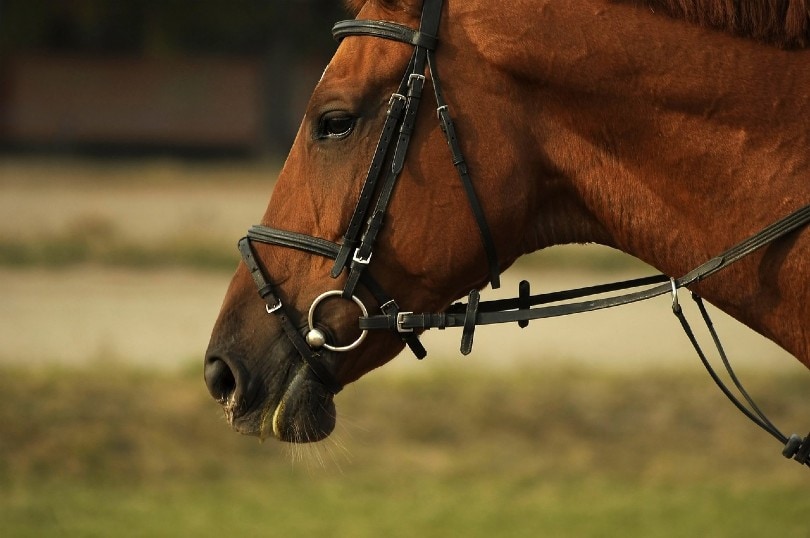
There is a lot of talk happening in the horse community about what types of bits should be used on different types of horses. It doesn’t matter if you’re a seasoned rider or a first-timer; choosing a bit for your horse feels like a daunting task. You want to make sure you’re carefully and mindfully selecting a bit based on how it fits into your horse’s mouth and the control you’re able to achieve with it.
There are many mechanics that go into a bit, and they all work in slightly different ways. The purpose of a horse bit is to communicate with your horse. The bit works alongside the reins and headstall and applies pressure to different parts of the horse’s head to guide the horse into doing what you want it to do. If you’re anxious to saddle up and ride, read through this guide for choosing the right horse bit so you can get back to doing what you love.
What to Look for in a Horse Bit
The most crucial part of any bit is the mouthpiece. Your horse is not going to react well to mouthpieces with sharp edges or design flaws. These factors could cause unintentional pain to their mouth and make your horse act up.
The diameter of the mouthpiece plays a significant role in the effectiveness of the bit. Thin mouthpieces only exert pressure over a smaller section of the tongue. Thicker pieces press on the tongue and provide no relief for your horse.
On each bit is a section called the port. The port is a U-shaped part on the mouthpiece with some shapes higher or lower into the mouth. When high in the mouth, the port helps cue the horse what to do so that the rider gets a response quicker than one lower in the mouth. While effective, they can also cause some pain when not used properly. The goal is to find a bit that works best with the shape of your horse’s mouth and how they respond to it.

Sings of a Comfortable Bit
The shape of your horse’s mouth and the dental layout are usually overlooked. Some people choose a bit and hope it works rather than finding the type of bit that fits the horse’s mouth. You might have an ill-fitting bit if the horse is having difficulty holding onto it, tossing its head around, stiffening its jaw, or lolling its tongue. Some horses have shallower palates and thicker tongues, and what is comfortable for one horse isn’t comfortable for another.
Overgrown teeth may also interfere with the way the bit fits in the mouth. Horses having issues with bits should be looked at by a veterinarian or equine dentist. These professionals usually have methods of determining which type of bit works best for your horse.
If your horse has been ridden before, consider what bit they were previously used to wearing. It isn’t fair to the horse to switch up the bit they have always known and expect them to work well with another. If transitioning over to a new bit is necessary, then have some patience with your horse and allow them to adjust to the way the bit feels and signals to them.
If you’re having trouble deciding with what bit to go with, the easiest way to work it out is through trial-and-error. This doesn’t sound like the most ideal method, but the more you rule out what the horse doesn’t like, the sooner you find out what they do.
How to Choose a Horse Bit
Take both the rider’s and horse’s experience level into consideration when using a bit. Less experienced duos should use softer bits in order to help both the rider and horse learn how to use it without damaging their mouth. Harsher bits are better to use if both the rider and the horse have plenty of riding experience.
Another important trait to consider when buying a bit is the length from ring to ring on the mouthpiece. The bit should extent about a quarter-inch beyond the horse’s lips on both sides. The bit should lay comfortably across the bars, a toothless gap in the horses’ jaw.

Common Types of Bits
While we won’t name every single bit on the market, there are a few that are more popular than others. Here is a list of a few of the most common types of bits and how they work.
O-ring Snaffle
The O-ring snaffle bit has fixed or sliding round rings and a jointed, two-piece bit between them. This type of bit applies only a little bit of pressure from the rider’s hands to the corners of the mouth as they steer. Pulling on one rein causes the ring on the opposite side to apply pressure to the horse’s mouth and face.
The O-ring snaffle bit is best for younger horses and new riders. These bits help improve communication with your horse without all the pressure or harsher bits.
Curb Bit
Curb bits work by using indirect pressure and leverage. They contain separate attachment points from the headstall and reigns and are slightly similar to snaffle bits.
The leverage from these bits allows you to apply minimum pressure to the reins while still receiving a quick response. When the rider pulls back, the top of the bit puts pressure on the chin instead of directly on the horse’s mouth and lips. These bits are best for advanced riders and horses. Inexperienced horse riders lack the hand control required to use these bits without damaging their horse’s mouth.
Correctional Bits
Correctional bits are similar to curb bits. This one has a long, rounded shank that sits higher in the mouth and adds pressure to the roof of the mouth. This type of bit relieves stress from the tongue, mouth, and lips.
These bits should only be used on trained riders and horses because they rely on minimal rein contact and zero harsh pulling.
Conclusion
Using a new bit is a learning experience for both the rider and the horse. Any time you switch a bit or train a horse, remember to have patience and be gentle. If you aren’t using a bit that was chosen specifically for your horse and their mouth shape, it can be a frustrating and sometimes painful experience for them.
The goal of choosing a horse bit is for it to fit comfortably and allow you to communicate with them in a way that doesn’t hurt them. As long as you are willing to find the right bit for your horse, you’ll soon be back riding, and your horse will be comfortable with you taking the reins.
See Also:
Featured Image Credit: 11A Fotografie, Shutterstock









